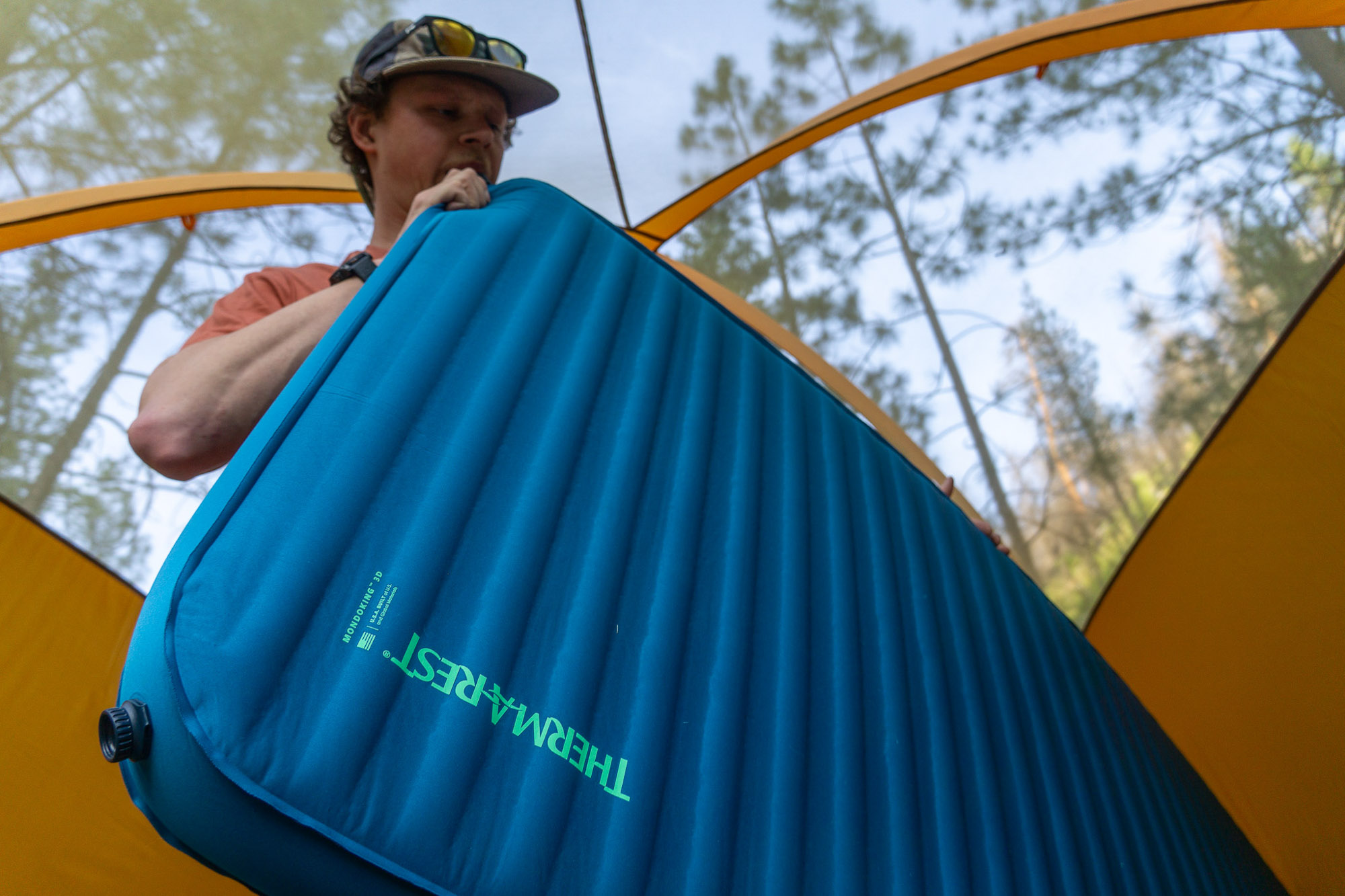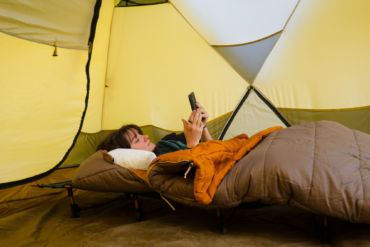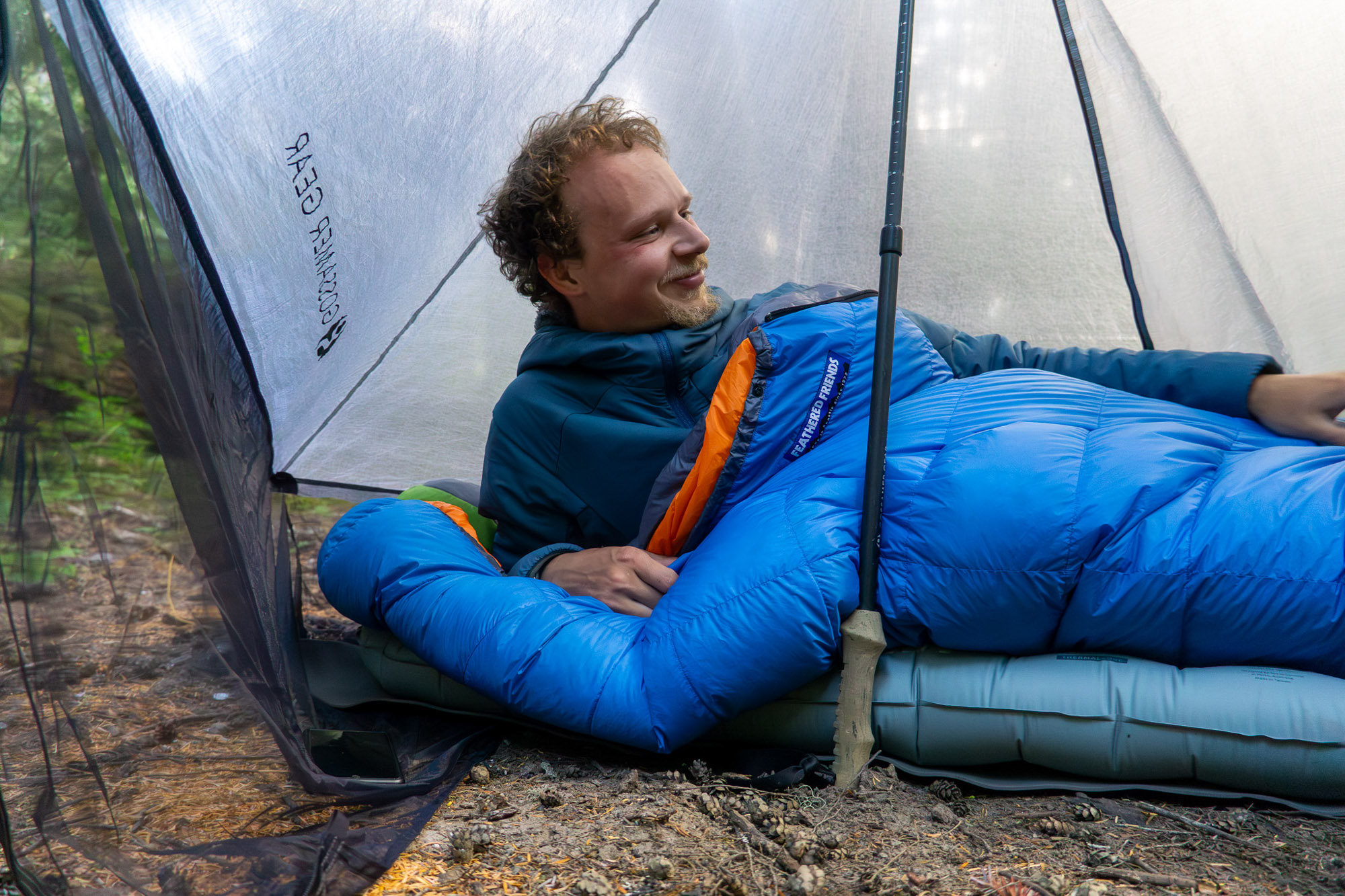When picking a sleeping bag, one decision will set the course for your ultimate purchase: Down or synthetic insulation?
When choosing a sleeping bag, you’ve got several variables to consider, including the temperature you’ll camp in and price, compressibility, and weight of the bag. The performance of the bag is largely driven by the insulating material, with other fabrics and design elements playing an important secondary role.
So when you plan to buy a sleeping bag, focus on the fill. Find the right insulating fill, and the right quantity of it, and you’ll probably find your perfect bag. These facts about sleeping bag insulation should help narrow your search.
Physiology of Sleeping Bag Insulation
The goal of insulation is to slow the transfer of heat from your body by trapping it in a layer of air around you. Air is a poor heat conductor and a fantastic insulator. The loftier the insulation, the higher the warmth-to-weight ratio. Both down and synthetic insulation can provide these magical pockets for warm air to settle, and each has its pros and cons.
Down Sleeping Bags: Pricey, Compressible, Durable

Down is the light plumage that lays under feathers and immediately next to the goose or duck’s skin. It’s one of nature’s finest insulators. An individual plume is composed of ultra-fine fibers radiating from its center, with fronds of smaller filaments branching off each fiber. The plume’s 3D structure creates pockets of air that trap heat and keep you warm.
The quality of down is measured by “fill power.” The higher the quality of down, the more space it will loft – 700 fill reaches a volume of 700 cubic inches per ounce, while 800 fill power lofts 800 cubic inches per ounce. In short, one ounce of higher quality down will loft more/hold more heat than a lower quality down.
High quality down is incredibly warm and at the same time super light. The rub? Getting a high-quality down fill – 800-plus – is increasingly expensive.
Down Durability
Down is exceptionally resilient, capable of being repeatedly stuffed and re-stuffed without compromising its fluffy warmth. A quality down sleeping bag can be expected to last 10 years or more, making them an investment in many nights’ sleep that lessens the sticker shock many of these bags carry.
Very Compressible
Down is incredibly compressible, and this is where it outshines synthetic insulation the most. Even a zero degree sleeping bag (of high quality down) can fit easily in the bottom compartment of a hiking backpack, making it a great choice for backpacking.
Down and Water
Of course, down’s Achilles heel is that when it gets wet — as in saturated — it becomes a mess, losing nearly all of its insulating properties. Recent developments in nanotechnology have resulted in hydrophobic coatings that bind with the filaments, causing them to repel water. While the resulting “Dry Down” is not waterproof, we’ve found it does preserve down’s loft. Some independent studies have found Dry Down lofts less than its regular down fill counterpart.
Regardless, if you are looking at a down bag, purchase an aftermarket waterproof stuff sack to keep your bag dry. We absolutely love Sea to Summit’s eVent Compression sack.
Ethical Issues
Down is a byproduct of the food industry. For those morally opposed to using animal products, down is a hot-button issue.
It has been linked with forced feeding of geese used to make foie gras in the past, as well as other inhumane treatment such as live plucking of ducks and geese. Responsible Down Standard has been established to ensure the ethical treatment of these animals, and many manufacturers only use down sourced from traceable, verifiable farms. Do some homework before you buy to ensure your bag uses ethical down.
Synthetic Sleeping Bags: Bang for the Buck
Down is sourced from geese (and ducks) used in the food industry. As people eat less fowl (avian flu anyone?), the cost goes up. This price jump has inspired a surge of synthetic fill innovation providing a plethora of less expensive options for consumers.

Synthetic fill is developed by a variety of companies, each making its own proprietary fill. But two general trends surface: short staple fibers and long continuous filaments
Short staple fibers mimic down’s 3D plume structure and compress well, but at the expense of longevity. They break down sooner after continuous stuffing and re-stuffing.
Continuous filaments weave long filaments of variable diameter to create a durable, high-loft insulation, but at the expense of compressibility.
Less Compressible
While both mimic down’s natural lofting ability, to date, synthetic fill has yet to catch up with down’s compressibility and longevity. No ounce of any synthetic will loft as much as a high-quality down.
Warmer When Wet
Buyers don’t reach for synthetic fabric for its compressibility, however. It is synthetic’s ability to maintain some warmth when wet that draws throngs of ardent supporters. While it makes sense to keep any sleeping bag dry as much as possible, synthetic insulation is much better at keeping the user somewhat comfortable even if they are soaked.
Cheat Sheet: Down Insulation
- Light and Compressible
- Durable–lasting well over 10 years
- Fantastic weight-to-warmth ratio
- More expensive
- Loses ability to insulate entirely when wet
Cheat Sheet: Synthetic Insulation
- Insulates when wet
- Dries quicker
- Non-allergenic
- Doesn’t compress as well as down
- Poorer weight-to-warmth ratio (heavier than down)
- Less expensive
What’s the Best Sleeping Bag Insulation?
It depends, of course!
At the end of a long day, tired and fed, we love the feeling of crawling into a cocoon of soft warmth provided by a quality down sleeping bag. Down is particularly nice for ultra-light purists or bike packers who measure success in margins of grams and disappearing volume. We’ll often reach for down on short weekend excursions where the risk is less.
If sticker shock prevents the plunge, consider that a well cared-for down bag will last decades.
Down’s disadvantages start to reveal themselves in wet climates or longer trips where exposure creeps into the margin of error. For critical missions, like alpine climbing, or extended expeditions deep into the wild without bailout options, synthetic is your best bet.
As synthetic innovation continues to develop, we expect that synthetic space will close the gap on all that makes down desirable.







